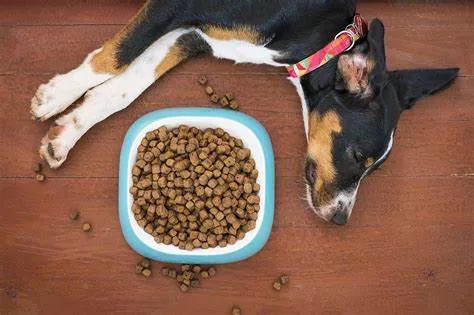As a pet lover, it’s heart – wrenching to see our beloved older dogs struggle with arthritis or joint pain. These conditions can rob them of their vitality, making once – simple tasks arduous. While medical treatment is fundamental, diet is a powerful tool in managing their discomfort and enhancing their quality of life.
Understanding the Nutritional Needs of Older Dogs with Arthritis
Protein
Protein is a cornerstone nutrient for older dogs, especially those with arthritis. With reduced activity levels, muscle atrophy becomes a real concern. High – quality, easily – digestible proteins are essential for maintaining and rebuilding muscle mass. Lean meats like chicken, turkey, and fish are top – notch choices. For instance, my neighbor’s senior Golden Retriever, Max, who developed arthritis, saw a significant improvement in his muscle tone after switching to a diet rich in lean chicken. Salmon, in particular, offers a dual benefit: it’s not only a protein powerhouse but also contains omega – 3 fatty acids, which have anti – inflammatory properties that can soothe inflamed joints.
Fat
When it comes to fats in an older dog‘s diet, quality trumps quantity. Healthy fats, especially omega – 3 fatty acids such as eicosapentaenoic acid (EPA) and docosahexaenoic acid (DHA), are crucial. These fatty acids can help reduce joint inflammation, alleviating pain and stiffness. Fish oil, flaxseed oil, and krill oil are excellent sources. However, it’s a delicate balance. Too much fat can lead to weight gain, which exacerbates joint stress. My friend’s overweight Dachshund, Daisy, experienced increased joint pain until she adjusted Daisy’s diet to limit fat intake while ensuring an adequate supply of omega – 3s.
Carbohydrates
Carbohydrates are a significant energy source, but for older dogs with arthritis, complex carbohydrates are the way to go. Foods like brown rice, oats, sweet potatoes, and whole – grain bread are digested slowly, providing a steady stream of energy. This is especially beneficial as older dogs often have a slower metabolism and require a consistent energy supply without sudden peaks and troughs. The fiber in these complex carbohydrates also aids digestion and helps in weight management.
Vitamins and Minerals
Certain vitamins and minerals play a vital role in supporting joint health. Vitamin C and vitamin E are potent antioxidants that can counteract the oxidative stress that often accompanies arthritis. Fruits and vegetables like oranges, strawberries, and spinach are rich in these vitamins. Minerals such as glucosamine and chondroitin are natural compounds essential for maintaining joint integrity. Glucosamine aids in the production of synovial fluid, which lubricates the joints, while chondroitin helps prevent cartilage breakdown. These can be found in some dog foods or added as supplements. However, always consult a veterinarian before introducing new supplements to your dog’s diet.
Feeding Tips for Older Dogs with Arthritis
Portion Control
Weight management is of utmost importance for dogs with arthritis. Excess weight puts additional strain on their already – compromised joints. Using a measuring cup or food scale to accurately measure food portions is key. Follow the feeding guidelines on the dog food packaging, but be prepared to adjust based on your dog’s activity level, weight, and overall health. For large – breed dogs like Great Danes, even a small weight reduction can significantly ease joint pain. On the other hand, small – breed dogs may need even more precise portion control due to their higher metabolism.
Feeding Frequency
Opting for smaller, more frequent meals can be highly beneficial. This approach aids digestion and prevents the discomfort of overeating, which can be particularly bothersome for dogs with joint pain. Instead of two large meals a day, consider dividing the daily food intake into three or four smaller meals. This not only aids digestion but also helps maintain stable blood sugar levels throughout the day.
Food Consistency
Dental issues or joint pain in the jaws can make chewing a challenge for some older dogs with arthritis. In such cases, wet food or softened dry food is a more suitable option. Wet food is often more palatable and easier to chew, and its higher moisture content helps keep the dog hydrated. If you prefer dry food, simply soak it in warm water for a few minutes to soften it.
Specialized Diets
The market offers a range of dog foods specifically formulated for older dogs with joint problems. Brands like Royal Canin’s Mobility Support, Hill’s Prescription Diet j/d Joint Care, and Purina Pro Plan Veterinary Diets Joint Mobility contain a blend of ingredients like glucosamine, chondroitin, and omega – 3 fatty acids to support joint health. However, every dog is unique, and not all will tolerate these specialized diets equally well. Monitor your dog’s reaction closely, and don’t hesitate to consult your veterinarian if you notice any adverse effects.
Conclusion
In conclusion, feeding an older dog with arthritis or joint pain demands careful consideration of their individual nutritional requirements. By providing a balanced diet, controlling portion sizes, and choosing the right food consistency, you can effectively manage their pain, improve their mobility, and enhance their overall well – being. Regular check – ups with your veterinarian are essential to ensure that your dog’s diet aligns with their changing needs. A well – nourished dog is better equipped to face the challenges of arthritis and enjoy a comfortable, fulfilling life in their senior years.
Related topics


